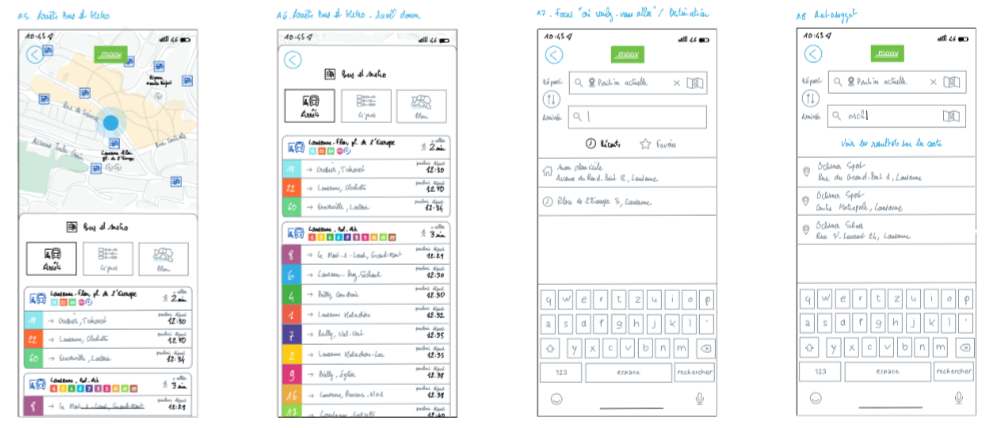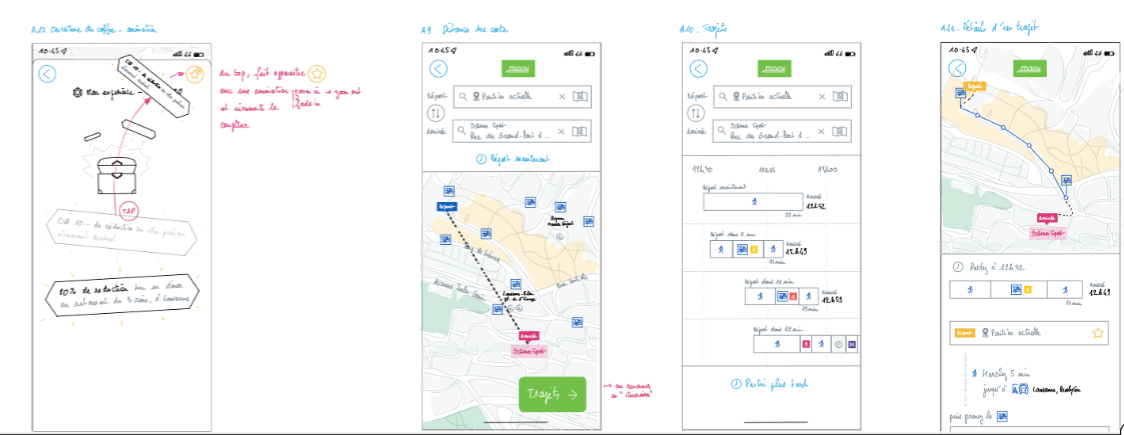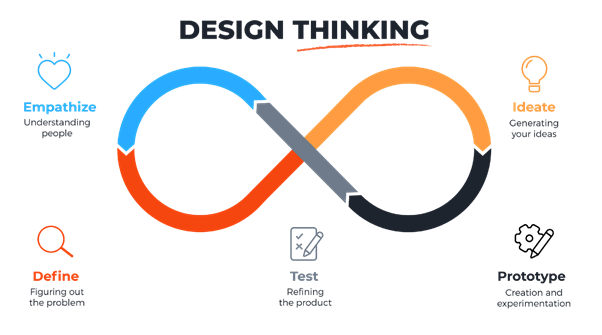Much more than a buzzword, Design Thinking is a user-centric approach to design and prototyping that encourages a continuous exchange between all the stakeholders in a solution: users, business specialists, products, techniques, managers and designers. From an operational point of view, Design Thinking "in the book" may seem intimidating: it implies a transformation of traditional processes for the design of solutions and their application maintenance. However, it is possible to extract some key principles that can be applied to a B2C project, without having to disrupt an existing organization.
1- User Research
The first strategic activity of Design Thinking is user research. Sociological in nature, it aims to better qualify customers: their habits, their possibilities, their expectations and their frustrations. It prioritizes the key scenarios to which a product or service must respond. It allows for a rationalization of services, products and information architecture, in line with what works for audiences. In the context of implementing a complex customer portal, this knowledge of the field allows for the segmentation of functionalities into coherent batches, with added value for the target audiences. At the same time, the Time-To-Market is accelerated and the planned evolutions can punctuate well-characterized communication campaigns.
2 - Design
The second strategic activity of Design Thinking is visual design. In the form of "sketched" representations of the screens and the flows between them, it gives shape to the vision of the project, with a minimal investment. It models the articulation of services and content by focusing on the essential. It is the perfect tool to free up creative intentions and ensure the coherence of the global vision, especially during evaluation workshops. In a second step, it passes the baton to detailed graphic design and then to interactive prototyping, essential for testing.


3- User Testing
The third strategic activity is user testing. In reality, it is not very costly in relation to its added value. It solicits real customers to quickly identify flaws and opportunities in the designs, before any technical development. It is an activity that is often neglected by companies during the project development phase, for fear of questioning the work done. However, it is the reality-check that is bound to happen once the project is on the market. Integrated in the design phase, user tests make the difference between a good design and an objectively successful design.
Finally, Design Thinking reminds us that a project does not stop with its first iteration and delivery to market. It is a process of continuous improvement, a perpetual back and forth between innovation and feedback from the target audience.


Customer portals are complex and strategic projects. Under the guidance of a pragmatic approach inherited from Design Thinking, such as the one we deploy at ELCA, a B2C project is a concrete dialogue between the various trades, focused on the end customer and structured by design, which makes the companies' service proposal evolve for an increasingly vital adequacy to a new market reality.
Related Content
Mark Chouadra
Lead Expert
Mark Chouadra, our Lead Expert at ELCA Engineering
